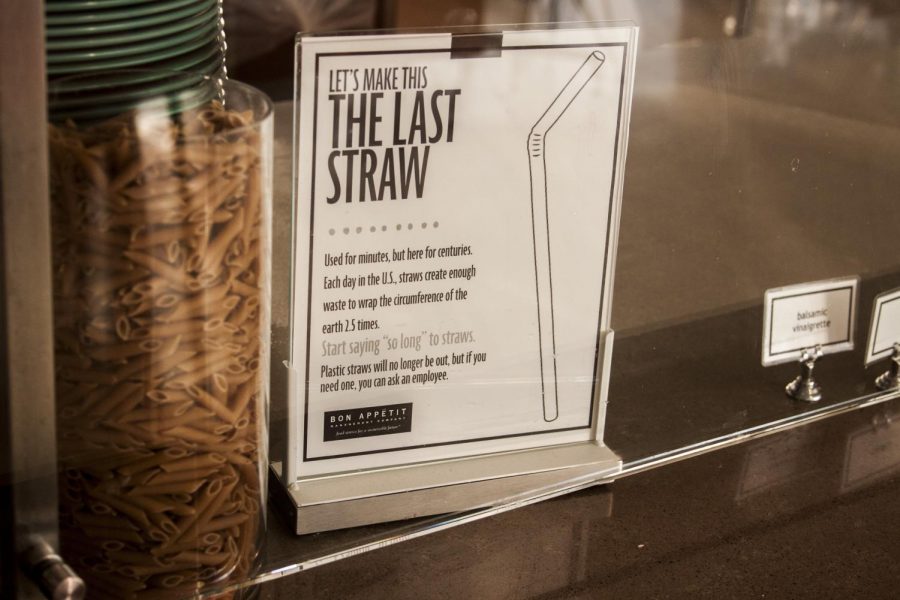Wilson: Plastic straw ban is a textbook straw man
September 7, 2018
It has happened every day this summer. You order a cold drink to escape the scorching heat, and it’s handed to you in a plastic cup, complete with a lid and straw. Not thinking twice, you guzzle it down and then throw the whole plastic cup out. Inadvertently, you’ve become part of the plastic trash conflict.
Recently, several major cities, including Seattle and San Francisco, have instituted a ban on the use of plastic straws. Even the entire state of California has passed legislation regulating the use of plastic straws.
But why are straws the targets? Why are people who just want to escape the heat being punished for something they didn’t explicitly ask for?
The plastic straw ban was a flawed idea from the beginning. Yes, the ban raises awareness about an exceptionally important issue: the constant use of single-use plastics. But it targets a rather small portion of the overall problem. Additionally, the bans punish the consumers, entailing anything from a $250 fine to jail time. Consumers who didn’t ask for the straw are being punished for its existence in their cups—which are entirely made of plastic, by the way.
The plastic straw ban is a perfect example of the classic straw man fallacy. The ban is presented as a stand against plastic waste, when it’s actually just companies and politicians attempting to distract constituents from the root of the problem.
Right now, between Hawaii and California, there is an island which won’t show up on any map. An island that is twice the size of the state of Texas and is made entirely out of plastic. Collections of plastic like this exist all over the world. These islands are made up of items we use every day without thinking twice: plastic bags, bottles, containers and yes, straws.
A whopping 79 percent of all plastic products used everyday wind up in floating plastic islands or a landfill. A dismal nine percent of single-use plastics even get recycled. However, plastic straws make up a minuscule portion of all the plastic which gets thrown out. Other plastic items, such as plastic cups or water bottles, make up significantly larger percentages of the plastic that does not get recycled.
Plastic straws are a scapegoat for the plastics businesses to cut costs. Brown paper bags could easily be used instead of cheap plastic bags, as could paper cups be used to replace plastic ones. Substitution is absolutely possible, but nobody wants to foot the bill.
It’s therefore nonsensical to push responsibility for the straw problem onto everyday citizens. Why are these cities punishing the consumers who just bought a drink instead of the manufacturers who produce the straws in the first place? The straws cannot contribute to the overall issue of non-recycled plastics if they were never created. The areas instituting straw bans should be prohibiting manufacturers from making or distributing them, or at the very least only banning businesses from giving them out to people in the first place.
Punishing the common consumer is inherently wrong as it won’t solve the issue directly; especially since, besides Seattle and San Francisco, most of the areas which have instituted the bans are smaller cities which do not have large and influential populations. The amount of people refusing straws due to the various bans around the country is not enough to cause the market to shift to less production. Instead, consumers are slapped with fines they don’t deserve for something they didn’t even ask for.
At its core principles, the straw ban is a great start. Single-use plastics are one of the single most detrimental elements in our society to date. But it doesn’t do enough, targets the wrong ideas and hurts the everyday, non-corporate people. Avoid plastic straws but also resist using plastic bags, cups, bottles or containers. Don’t fall for the straw man that is the plastic straw ban.
Peter Wilson is a second-year biomedical engineering student on the biomaterials track. He works in the Gustafson Lab and can be found on Twitter at @wpieltseorn.


